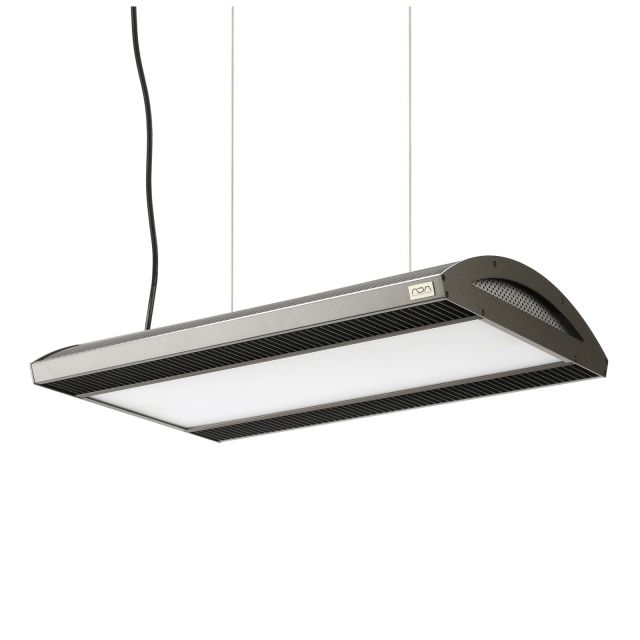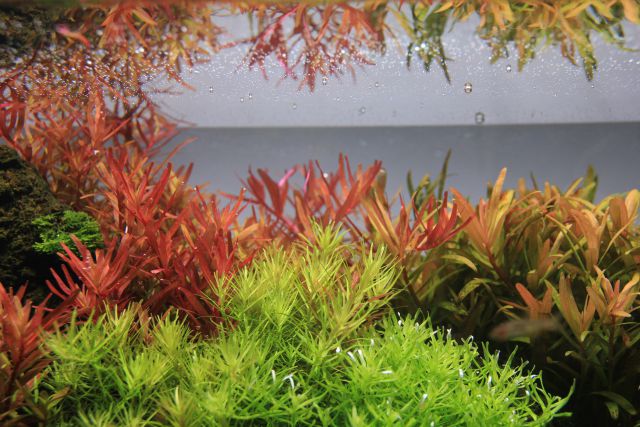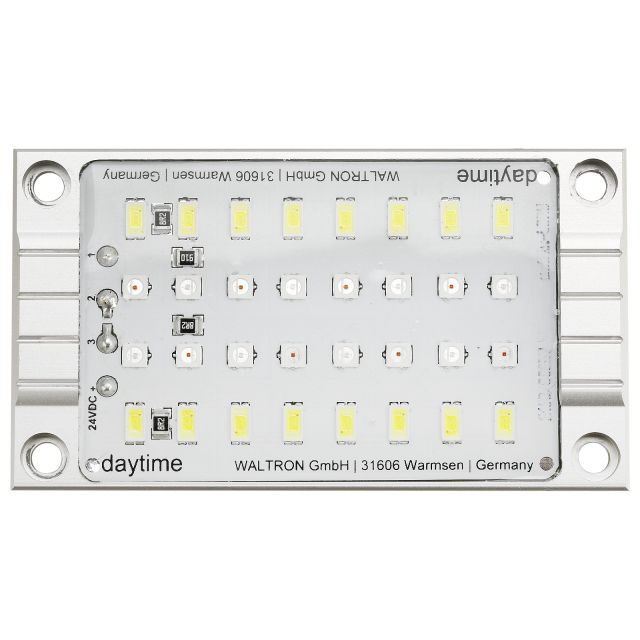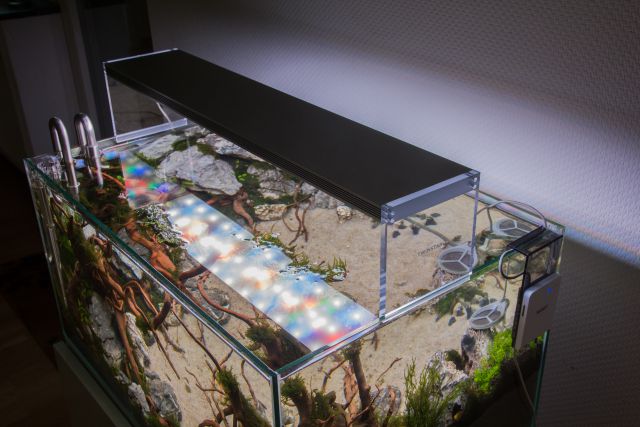In the article "Aquarium LED", we've already described how you, as an aquarium owner, can calculate the performance of your old lights such as fluorescent tubes or metal halide bulbs so you can replace them with LEDs without sacrificing light intensity. Modern LED lighting is characterized by the fact that it consumes significantly less power than conventional HQI, T5 or T8 lamps. However, depending on the light-emitting diodes that have been used to build the LED light, there may be differences in the luminous efficacy. In this article, we'll explain how the efficiency of aquarium LED systems can be defined more exactly, which makes the comparison between the different lamps easier.

Lumens
In the article mentioned above, we’ve already covered the unit lumen in detail. Lumen is used for measuring the luminous flux emitted by a light source. This parameter expresses the rate at which the light is generated. Lighting with a high lumenage is perceived as particularly bright by the human eye. When purchasing LED lighting, you should consider the manufacturer’s specification of the lumenage of the lighting system. This parameter can help you compare the brightness of various models.
Watts
The unit "watt" defines the performance, i. e. the power consumption of an electric or electronic device. In the aquarium hobby, people would regard the wattage (falsely) as equal to the light intensity, true to the motto "what consumes much, must generate a lot of light". As a consequence of this assumption, the rule of thumb "watts per liter" was established.
This rule sets the power of a lamp in relation to the volume of the aquarium it lights, to get reference values for certain types of aquatic plants (introduced by Paffrath in 1979). For example, the so-called low-light range is defined at around 0.2 to 0.3 watts per liter, which is enough to light shade-loving plants such as Anubias, undemanding ferns or mosses. On the other side of the scale, we have the high-power range of around 1 watt per liter, recommended for demanding aquatic plants such as red stem plants. A moderate light requirement is defined at around 0.5 watts per liter.

As we have already mentioned, the wattage is actually the wrong unit for describing the "light intensity", but it has established itself over the years in the course of the above-mentioned rule of thumb "watts per liter" that is used for indicating the specific need for light in aquatic plants. In fact, it would be more accurate to calculate with the physical parameters candela (luminous intensity in relation to the solid angle), lux (illuminance in relation to an illuminated surface) or lumens (luminous flux). The latter unit of measurement is particularly well suited for elementary calculations and comparisons because of its simplicity. By now, there is an enormous variety of aquarium lighting systems and models, and due to that as well as due to the divergence between the power consumption in watts on the one hand and the light flux in lumens that is emitted on the other hand, we have lamps of varying efficacy when it comes to power consumption. Before purchasing new LED lighting equipment, dedicating some time to delve deeper into the subject of luminous efficiency.
Luminous efficiency
A lighting system is particularly efficient in terms of power consumption if it has a low power uptake on the one hand (watts) and generates a high luminous flux on the other side (lumens). These two units can be combined in a specific ratio by dividing the values of lumens by watts (Lm / W). This fixed quotient is defined as the luminous efficiency. Power-saving aquarium LEDs have a good light output and efficiency if the parameter of lumens per watt is high.
Examples
LED technology is constantly evolving, and the industry produces more and more efficient light-emitting diodes while steadily improving light output. In that sense, one cannot assume the perfect parameter reading to strive for, since it will change over time. Nevertheless, the current status (2018) is that manufacturers such as daytime offer LED systems with around 120 lumens per watt (eco and cluster series) to up to 180 lumens/watt with their new matrix series. These values are already pretty good. Dennerle also promises an output of 120 lm/w with their Trocal LEDs. The Chinese manufacturer Chihiros advertises their A-series with around 150 lumens/watt (with slight fluctuations depending on the model). As you can already see from those few examples - it’s worth comparing!

Daytime’s matrix series features a superb efficiency with 180 lumen/watt.
Please note that aquarium lights with pure white LEDs have a particularly high light output. So-called RGB lighting systems are equipped with colored LEDs in addition to pure white ones, resulting in considerably lower lumen values. This includes the Twinstar LED light e, the ADA RGB Solar or the Chihiros RGB-series. These LED systems are less efficient in terms of power savings and lay more emphasis on the light experience with much more intensely shining colors.

By the way: If and when the conversion to LED lighting pays off and how to calculate everything is summarized in this separate article.